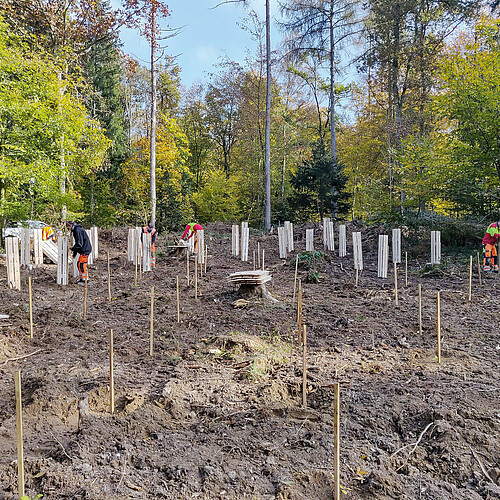- Knowledge
Influence of browsing on tree regeneration in Switzerland: overview based on cantonal data
24.04.2025
Buds and shoots of young trees are part of the diet of wild ungulates, which can have an influence on tree regeneration. We investigated the current extent of influence of ungulates in Swiss forests (2020–2024) and whether there are regional differences. To this end, we collated cantonal data from expert surveys on the influence of ungulates and from plot-count inventories. The impact of ungulates is currently assessed by experts on around two thirds of the forest area. Depending on the classification of the cantonal assessment levels, 46 to 50% of the forest area are in level 1, i.e. without impairment of natural tree regeneration. This is significantly less than in 2015 (68%). The remainder are in levels 2–4 with effects on quality, the tree species mixture or even delays or impediments to the regeneration process. Fir and valuable broadleaves are particularly affected. In the cantons of GL, GR and VS, spruce trees were also frequently browsed in the plot-count inventories. In all three cantons, >10% were assigned to the highest ungulate influence level in the expert surveys, which in these three cantons is described as ‘severe impairment of all tree species’ or ‘total loss of regeneration’. According to the expert assessments, the influence of ungulates reduces the future potential of Swiss forests in around half of the assessed forest area. The extent to which this affects the adaptability of forests to climate change, the long-term protective function, tree diversity and/or the production of valuable timber remains unclear due to the inconsistences in defining the ungulate influence levels. In order to obtain more differentiated and better comparable results, more systematic and standardised assessments should be made in the future, which should also take into account the future suitability of the tree species. This should not be done at hunting or forest district level, but on a smaller scale so that problem areas become visible and quantifiable.
Schweiz Z Forstwes 176 (3): 146–157.https://doi.org/10.3188/szf.2025.0146


